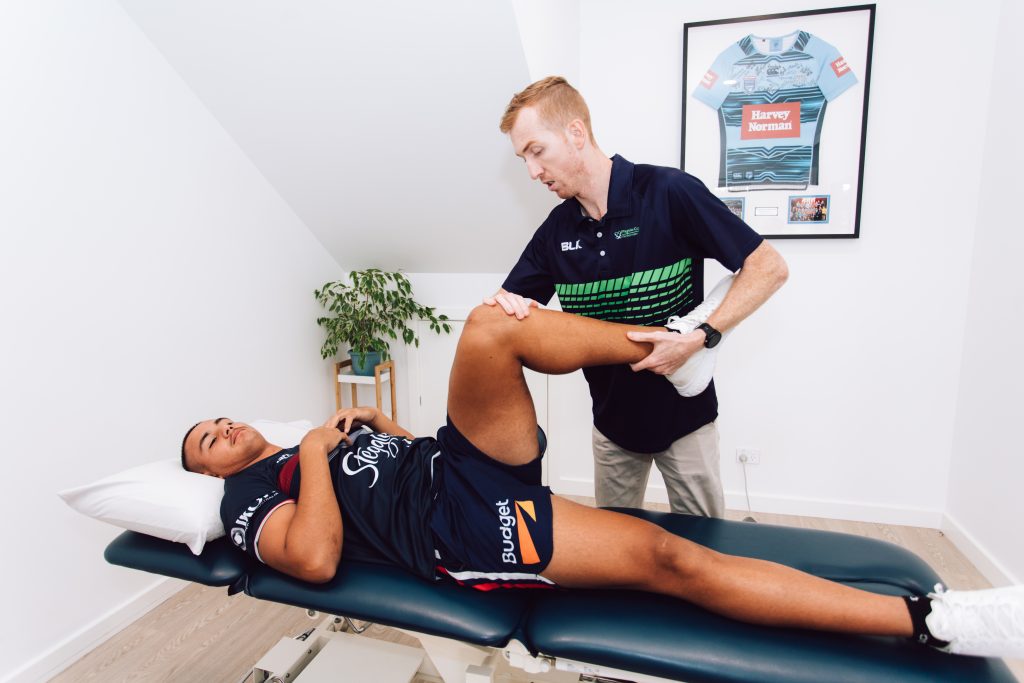How frustrating is it when you have worked up the motivation to pop your joggers on and get out to go for a run… and your knee starts protesting? Whether it’s the slow build up of an ache that gets worse the further you go, or an unsettling click that wasn’t there before, or the 10 minutes of stiffness each time you get started. These are all signs of an unhappy knee.
Even more annoying, it’s often not even your knee’s fault, and let’s explain why. The knee is a fantastic joint with big bones and big muscles that, when working well, is efficient and robust to injury. The down side of big bone and muscles, are when things start to change, they change in a big way.
The most common running related knee pain comes from the rubbing of the kneecap (patella) against the femur (thigh bone), in a way that it doesn’t like, called patellofemoral pain syndrome (PFPS).
Often this is due to poor control of either:
1. The thighbone rotating inwards
2. The kneecap being pulled laterally
3. The arch in the foot dropping down.
So, lets break down these individually to see if there are some solutions to your knee pain.
1. Internal rotation of the femur
The femur is the long thigh bone that makes up part of the hip joint and provides an attachment site for your
glutes. This holds your leg in an upright position when you run. The better you can control your femur when
on one leg the less knee pain you’ll get. The poorer control of the femur the more inward it will rotate which
creates more pressure and rubbing of your patella (kneecap). This typically equals pain. So how do I
control this rotation? Glute strength is the answer. In particular the gluteus medius. Its role is to extend and
externally (outwardly) rotate the femur, holding it in a great position for the patella to work efficiently. Some
great exercises to get this muscle group firing are glute bridges, mini-band crab walks, single leg squats
and split squats.
2. Lateral glide of the patella
The patella is attached and controlled by the quadriceps, a group of 4 muscles. If there is an imbalance in
tension or strength toward the outer quads, then the patella will be pulled laterally, creating friction
underneath it. So, by loosening the outer quadriceps and strengthening the inner quadricep (VMO), we can
hold the patella in a central position and hence reduce the friction. Early phase exercises to include to
promote this include squeezing your knee straight over a rolled towel or standing upright and squeezing
your knee back against a tensioned theraband. The goal is to ensure the VMO is activating before the outer
quads in these movements. Foam rollers, massage and dry needling are great for reducing the tension off
the outer quad. It is important to progress your VMO exercises as you become stronger. Getting into
positions that simulate running are best i.e. single leg squat or lunges.
3. Over-pronation of the foot
As the shin and thigh bones sit on top of the foot, if the arch starts to roll down, then the bones above will
also move into a non-optimal position when you run. By controlling the arch into a neutral position, the
bones above have a stable platform to work from, reducing the load on the knee. Taping and orthotics can
help hold its position, but the best long-term fix is to strengthen the muscles that hold the arch up. Try doing
calf raises with a ball squeezed between your heel bones, or emphasising your arch lift when squatting or
lunging. Performing these exercises without shoes can give you an idea how much strength your arches
actually have.
By controlling these factors, you are giving your knee the best chance at running pain-free. Many of these
factors are difficult to assess yourself, so don’t be afraid to book a running assessment with your physio for
some further tips.

